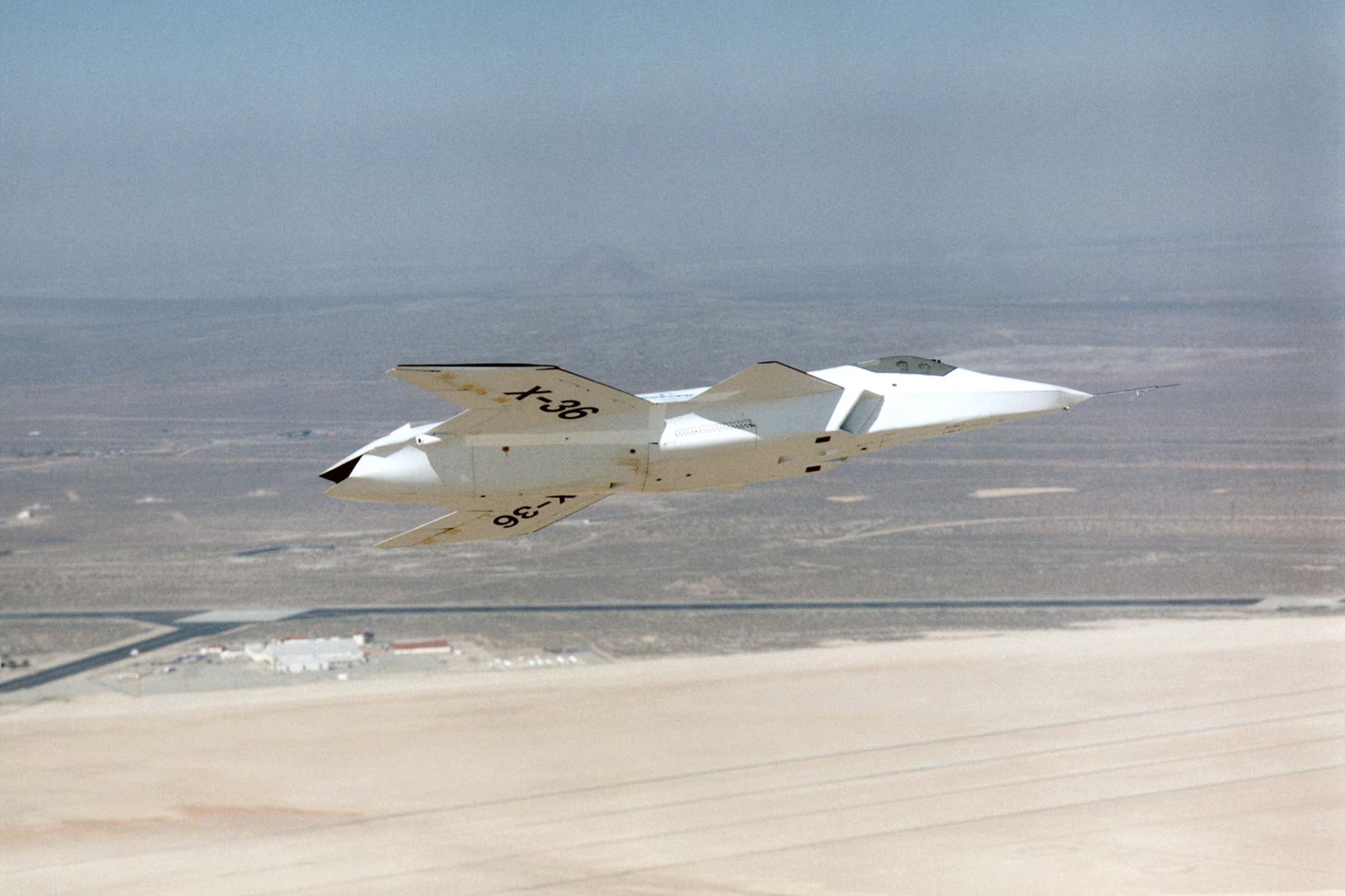
The competition for air supremacy has always been one of extending boundaries—sometimes physical ones, such as the sound barrier, and sometimes conceptual ones, such as creating a tailless jet fighter. That’s precisely what the Boeing X-36 project aimed to do back in the 1990s. Although it never went into full-scale production, this revolutionary tiny plane broke the conventions of conventional fighter aircraft design and pioneered in secret what is today’s U.S. Air Force’s sixth-generation stealth fighter, the F-47.

Rethinking the Fighter Jet: Inside the X-36 Project
In the mid-’90s, McDonnell Douglas Phantom Works (now Boeing) collaborated with NASA on an ambitious test: Could a jet be designed without a vertical tail and yet provide first-rate maneuverability and control? The outcome was the X-36, a sleek, otherworldly-looking model reduced to just 28% of what a full-scale fighter would represent.

At a mere 19 feet in length and around 1,250 pounds fueled, the X-36 was driven by a humble 700-pound-thrust F112 turbofan engine. But this was not about brute strength. This was a prototype for cutting-edge flight control and stealth technology. Without a vertical stabilizer and no conventional tailplane, it used a canard-forward wing plan and a characteristic, wide “lambda wing” profile that provided an unmistakable silhouette.

Taking Flight: Piloting the Unconventional
Flight tests began in May 1997 at NASA’s Dryden Flight Research Center in California. Since the X-36 was a scaled model, it wasn’t piloted by someone on board—it was controlled from the ground via real-time video input and a fighter-style heads-up display.

Within only 31 test flights, the X-36 accumulated more than 15 hours of flight time and demonstrated that it could fly—and fly well. It approached heights above 20,000 feet and was able to sustain violent angles of attack up to 40 degrees. For a vehicle without the traditional control surfaces, this was no small achievement.

Enabling Control: Fly-by-Wire and AI
One of the biggest challenges the X-36 needed to overcome was stability in flight. Cutting off the tail of a jet renders it unstable by nature, particularly in pitch and yaw. To counteract, they outfitted it with an advanced digital fly-by-wire system that coordinated the movements from its canards, divided ailerons, and thrust-vectoring nozzle.

The project also incorporated early AI flight control software, such as the U.S. Air Force’s RESTORE program. The neural network system was able to learn how to adjust to control surface failures in real time—an incredibly useful survivability tool for combat missions. Despite its compact size, the X-36 flew like a much more agile, advanced aircraft. It was able to do low-speed maneuvering just as well as it could high-speed flight—a combined ability few full-scale fighters possess.

A Lasting Legacy: How the X-36 Contributed to Future Stealth Fighters
Although the X-36 never entered service, its legacy continues to be felt. Building a full-scale tailless fighter was considered too costly at the time, and the program was cancelled. But the experience gained—particularly in flight control, stealth shaping, and thrust vectoring—did not vanish. The X-36 demonstrated that a tailless design could functio —and function effectively.

That understanding cascaded into other testbeds, such as Boeing’s Bird of Prey and X-45 UAVs, and more recently into the design and development of America’s military’s sixth-generation stealth fighter: the F-47.

From X-36 to F-47: A Design Legacy Takes Flight
The F-47, being developed now by Boeing as a component of the Air Force’s future air dominance program, bears unmistakable echoes of the X-36’s DNA. It is similarly tailless, with a broad front fuselage and forward canards—features not only for stealth, but for maneuverability and system integration.

Unlike conventional fighters, the F-47 will be designed to fight alongside autonomous drones in a manned-unmanned team, depending on a wide range of onboard sensors and artificial intelligence-supported systems. The tailless design, which was a revolutionary experiment once, is now a defining feature of what could become the Air Force’s most sophisticated combat aircraft. It could not have been done without the confidence that came from flying and learning to analyze the X-36.

A Wider Context: Other Tailless Stealth Tests
The X-36 was part of a range of tailless ideas flown during a particularly experimental phase of U.S. aerospace history. Boeing’s Bird of Prey pushed stealth shaping to the limits, and Lockheed’s X-44 MANTA dove into delta-wing control without the use of canards. Even less well-known, YF-24 allegedly tested for tailless configurations.

Each of them demonstrated elements of flight physics, control, and radar evasiveness. But the X-36 did all three, and combined them all, in one small package, and did it first.

From Risky Idea to Real-World Fighter
The history of the X-36 is a strong reminder that some of technology’s greatest advances come from the most unlikely concepts. A tailless, remotely operated prototype would have sounded like a specialist’s divertissement when it was created. But it laid the groundwork for planes that flew faster, turned tighter, and blended into the background better than any planes ever built.

Now, as the F-47 gets ready to take to the skies, the legacy of the X-36 is becoming clearer. It might never have fired a shot or taken to the skies in combat, but its fingerprints are all over the next chapter of American airpower.
